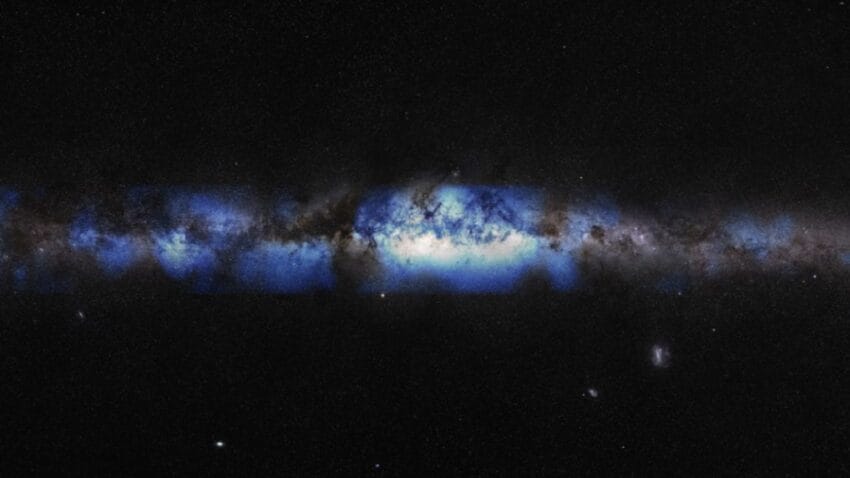
How a mysterious particle could explain the — Recent research suggests that a mysterious subatomic particle, the neutrino, may hold the key to understanding why antimatter is so scarce in the universe..
How A Mysterious Particle Could Explain The
Recent research suggests that a mysterious subatomic particle, the neutrino, may hold the key to understanding why antimatter is so scarce in the universe.
The Matter-Antimatter Conundrum
Everything we observe, from the Earth beneath our feet to the most distant galaxies, is composed of matter. This fundamental observation presents a significant puzzle for physicists: according to the prevailing theories of particle physics, matter and its counterpart, antimatter, should have been produced in equal amounts during the Big Bang. However, the observable universe appears to be overwhelmingly dominated by matter, with antimatter being exceedingly rare. This discrepancy raises the question: what happened to the antimatter?
Theoretical Background
In the realm of particle physics, the concept of antimatter is rooted in the principles of symmetry. Each particle has an associated antiparticle with the same mass but opposite charge. For instance, the electron (a negatively charged particle) has a corresponding positron (a positively charged particle). If matter and antimatter were created in equal quantities during the Big Bang, they should have annihilated each other upon contact, resulting in a universe filled with radiation rather than matter. The fact that we exist in a matter-dominant universe suggests that some processes must have favored the production or survival of matter over antimatter.
The Role of Neutrinos
Current research suggests that the elusive neutrino may play a crucial role in unraveling the mystery of the missing antimatter. Neutrinos are subatomic particles that interact very weakly with matter, making them incredibly difficult to detect. They are produced in vast quantities in nuclear reactions, such as those occurring in the sun, during supernova explosions, and in particle accelerators.
Neutrino Experiments
Recent experiments have begun to explore the properties of neutrinos in greater detail. The Standard Model of particle physics, which describes the fundamental particles and forces of the universe, does not fully account for the observed matter-antimatter asymmetry. Researchers are investigating whether certain types of neutrinos could exhibit behaviors that differ from those of their antiparticles, a phenomenon known as charge-parity (CP) violation.
Jessica Turner, a theoretical physicist at Durham University in the United Kingdom, notes, “It’s not to say that neutrinos are definitely the explanation of the matter-antimatter asymmetry, but a very large class of models that can explain this asymmetry are connected to neutrinos.” This highlights the potential significance of neutrino behavior in addressing the longstanding question of why our universe is predominantly matter-based.
Implications for Cosmology
Understanding the role of neutrinos in the matter-antimatter asymmetry could have profound implications for cosmology and our understanding of the universe’s evolution. If neutrinos are found to behave differently than their antiparticles, it could indicate new physics beyond the Standard Model, potentially leading to the development of a more comprehensive theory of fundamental particles and forces.
Future Research Directions
As researchers delve deeper into the properties of neutrinos, several experimental initiatives are underway. These include:
- Long-Baseline Neutrino Experiments: Facilities such as the Deep Underground Neutrino Experiment (DUNE) aim to study neutrino oscillations over long distances, which could reveal differences in the behavior of neutrinos and antineutrinos.
- Neutrinoless Double Beta Decay Experiments: These experiments are designed to detect a rare process that could indicate the existence of Majorana neutrinos, which are their own antiparticles. The discovery of such particles would have significant implications for our understanding of the universe.
- Astrophysical Observations: Observations of cosmic events, such as supernovae and the cosmic microwave background radiation, may provide additional insights into the behavior of neutrinos and their role in the early universe.
Conclusion
The search for answers regarding the universe’s missing antimatter is a complex and ongoing endeavor. While neutrinos are not definitively the answer, they represent a promising avenue of research that could illuminate the mechanisms underlying the observed matter-antimatter asymmetry. As experimental techniques advance and our understanding of these elusive particles deepens, we may be one step closer to solving one of the most profound mysteries in modern physics.
Source: Original reporting
Further reading: related insights.
Was this helpful?
Last Modified: August 18, 2025 at 2:08 pm
2 views















